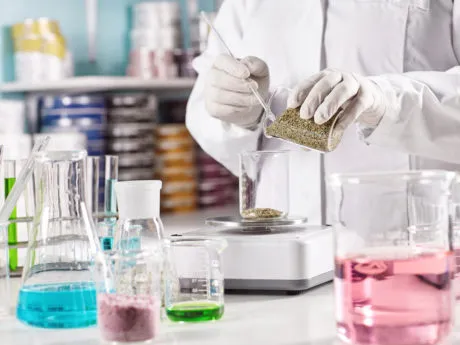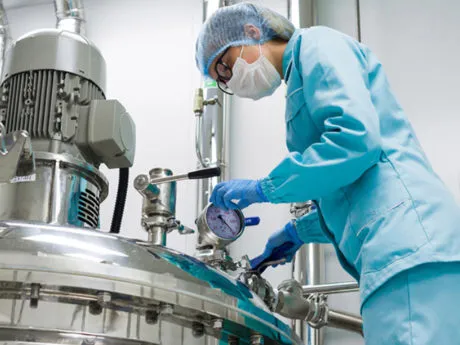Experts' advices
I work in a laboratory
There are two main challenges to reduce laboratory accidents:
Develop accidental spill management on the one hand, and on the other hand cleaning of the equipment/material for the next use


- Chemical hazard, irritant, corrosive, reactive with water and air, explosive, oxidizing, flammable.
- Toxic fumes that may be inhaled or cause irritation.
- Damage to material, equipment, or building.
- Discharges into the sewer system.
DECONTAMINATION OF EQUIPMENT

FREQUENTLY ASKED QUESTIONS
Ammonia is often used in its gaseous form. However, it dissolves readily in water, alcohols or other solvents in order to be used in an industrial setting or as a cleaning agent. An aqueous ammonia solution emits vapours that can irritate the respiratory system. If you wish to absorb and neutralize an ammonia spill, please follow these instructions :
- Evacuate the persons near the spill, protect yourself with the appropriate equipment and secure the zone.
- Make a dam around the spill with a neutralizing absorbent, such as TRIVOREX® versatile neutralizing absorbent (for all hazardous liquids) or BASICAPTAL® neutralizing absorbent(specifically for base spills). They will considerably reduce gaseous emissions, neutralize the basicity of the spill and allow you to collect the residue more easily.
- Put the absorbent on the spilled liquid. If the residue turns pink it is acid, when it turns back yellow, it is neutral.
- Collect the residue and remove the waste in accordance with the regulations in force.
This procedure applies in the event of a minor spill that can be managed internally :
- Inform people in the vicinity of the hazard. Then find the right equipment to protect you and secure the area.
- Make a dam around the spill with TRIVOREX® neutralizing absorbent (compatible with all acids, bases, solvents, oxidants, etc.). It will reduce irritant vapours, neutralize the spill and allow you to pick up the residue more easily.
- Put the neutralizing absorbent on the spill and wait a few minutes for complete absorption of the liquid.
- Collect the residue and treat it in accordance with national regulations in force.
Managing a chemical, corrosive or irritant spill is a very dangerous task, difficult to pick up and thoroughly clean.
TRIVOREX® neutralizing absorbent (compatible with all acids, bases, solvents, oxidants, alcohols, etc.) will reduce irritant vapours, neutralize the spill and allow you to pick up residues more easily, regardless of their nature and concentration.